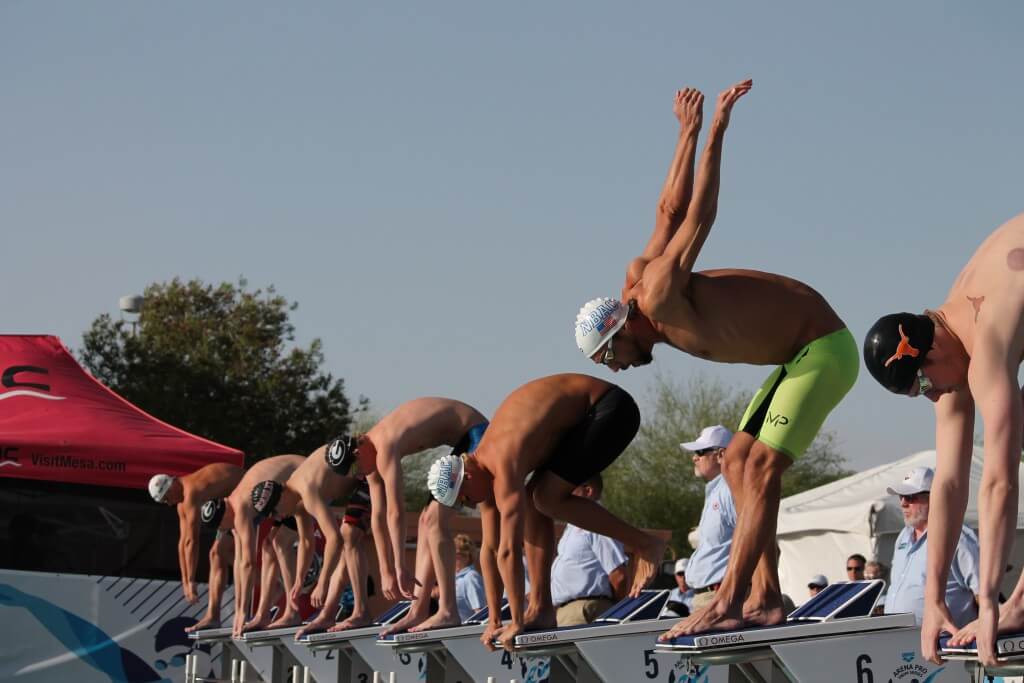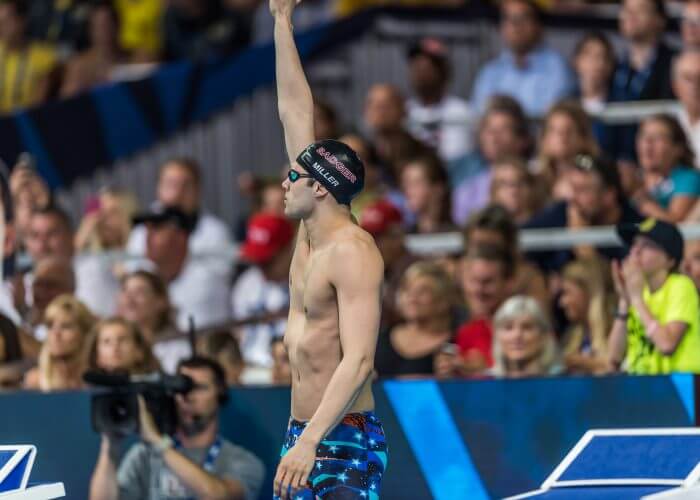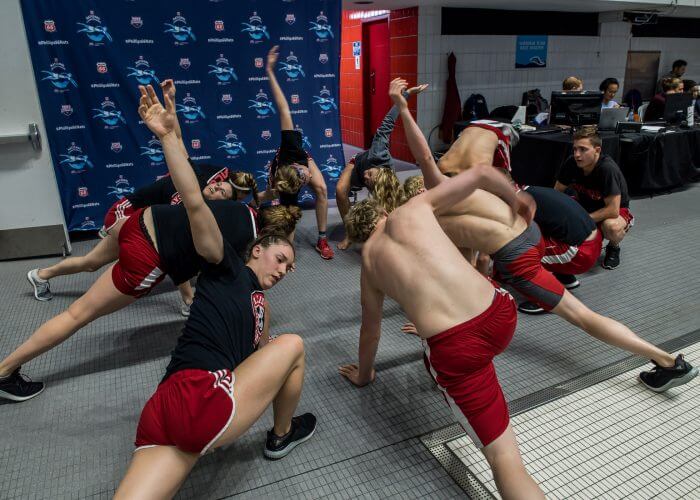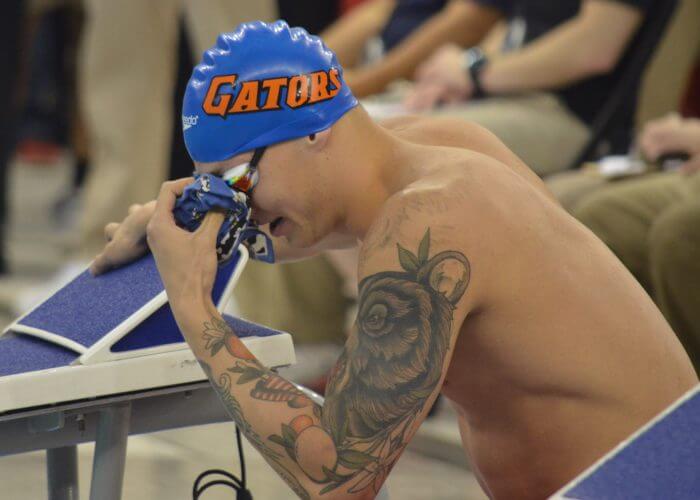Three Ways to Mentally Edge Out Your Competition

By Mac Robertson, Swimming World College Intern.
As each swimmer steps up on the block, all eyes are on one man. He flaps his arms across his body three times before he gets in a ready position. Michael Phelps has the most famous pre-race routine in all of swimming. Whether it was an Arena Pro Swim Series meet or an Olympic final, he always followed that exact same routine: three flaps of the arms and he was in the zone, ready to dominate once again.
Making sure you have a warmup that matches your stroke and meet lineup is crucial; however, not much attention is ever paid to warming up your mindset.
Getting into a zone while also staying relaxed can help you reach heights previously unknown. These three simple mental techniques will help warmup your mindset and keep you relaxed throughout each meet.
1. Visualization

Photo Courtesy: Peter H. Bick
Visualization has become a key point of success for the United States national swimming team. Keenan Robinson, the team’s High-Performance Director, encouraged each swimmer to visualize before their races at the Olympics.
Cody Miller began using this technique leading up to the 2016 Olympic Trials. He explained that he began visualizing months before even making the Olympic team. He visualized the environment of the arena, the feel of the water, and each turn made within the race.
Rather than only focusing on winning, the best swimmers visualize the entire process and movements that are required to swim the fastest.
2. Routine

Photo Courtesy: Peter H. Bick
Having a unique routine prior to the meet is essential to fast swimming. This mental routine does not necessarily include warming up your muscles. It can be a small or big action that tells your brain “I am ready to race.”
This must be a routine that is done before each race to get you into the fast swimming mindset. Phelps has the legendary arm flaps that gets him in the “zone.” This helps him to relax before the starter barks: “Take your mark.”
Olympic medalist Gary Hall Jr. was well known for shadow boxing and flexing prior to stepping up on the block for his race. Gary now speaks to the importance of having a routine that helps relax your mind from any nerves and gets your mind in the zone.
It can be as simple as cracking each knuckle before you step onto the blocks, but it needs to be the same each time.
3. Reflection

Photo Courtesy: Dan D’Addona
Each day brings a new set of challenges both in and out of the water. A simple way to reflect on each meet and practice is through journaling. The journal can include how your body felt after practice, how it felt after meets, or more simply how your day was.
Caeleb Dressel keeps a logbook to describe how he felt during each practice. This is an easy way for him to go back and check how he was feeling leading up to certain meets. Ultimately, he can alter his workouts to match his needs for each race. Reflection on races and practices can help you effectively prepare for the next obstacle.
The mental realm of swimming is so often overlooked by both swimmers and coaches. Using a mental technique to prepare for the next time you swim may give you an edge over your competition. Warming up your mindset will help you drop that extra half second to reach all of your goals!
All commentaries are the opinion of the author and do not necessarily reflect the views of Swimming World Magazine nor its staff.




Josh Barila